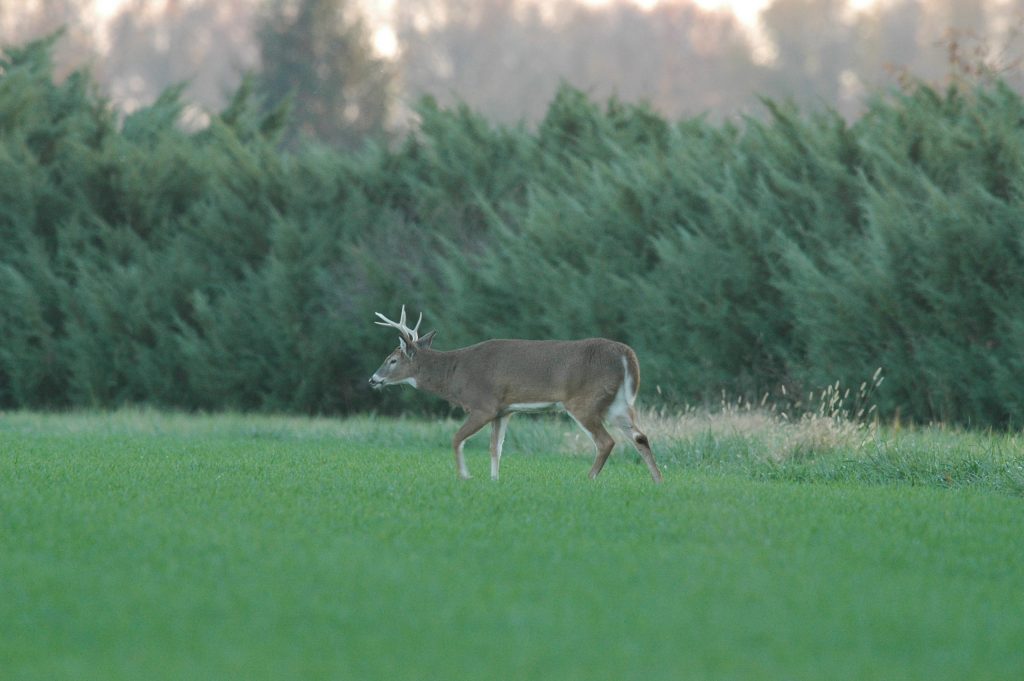One of our astute readers noted that this season’s first case study, Buck 11993, seemed to travel in a counter-clockwise direction. I thought that was a pretty interesting observation – and worthy of more investigation [Duane might have too much time on his hands].
For a buck to travel in a counter-clockwise pattern, he would have to make more left turns than right. In the animal movement literature that is called the “turning angle” (And yes! there is a complete field of study related to animal movement!)
The turning angle is not the direction the animal moves, but the change in direction. Turning angle is the deviation from straight line travel as illustrated in the figure below.
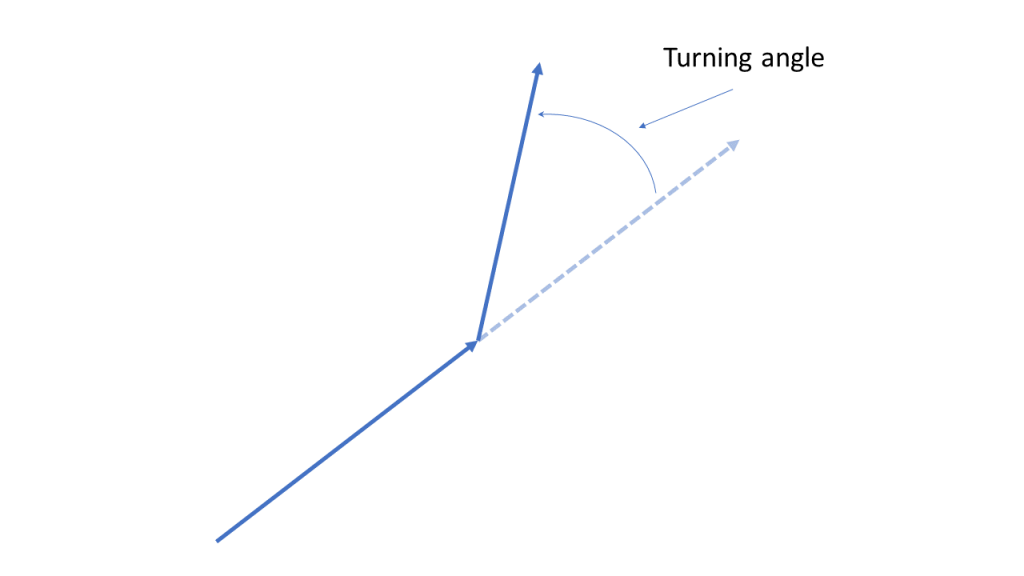
Max turning angles are 180 degrees: -180 degrees is a complete about-face to the left; +180 degrees is a complete about-face to the right. Zero degrees is straight ahead.
For each of the 2-week periods I made the movie for Buck 11993, I graphed the probability of turning a given angle – the higher the point on the curve the more likely Buck 11993 was to turn at that angle.
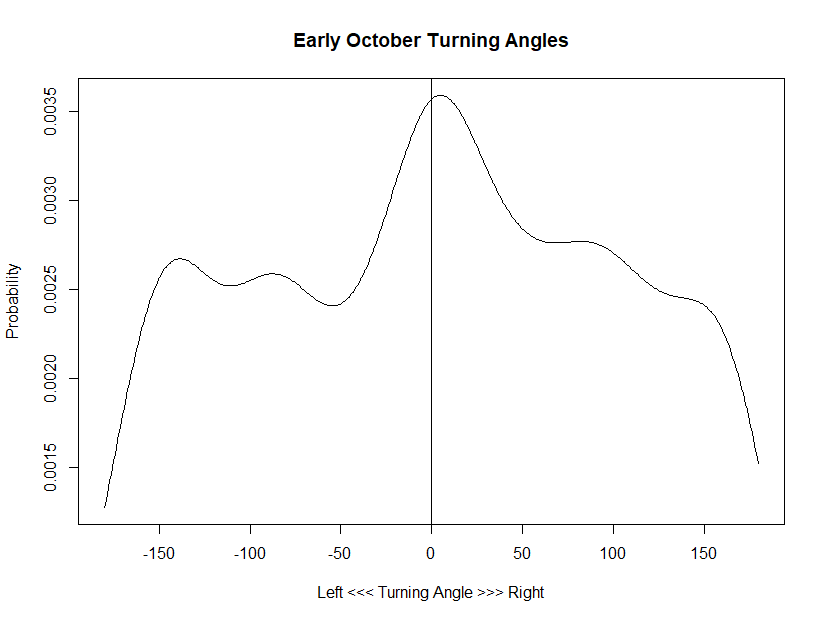
For early October (pre-rut period), the peak is right around zero meaning that if this buck was traveling in a given direction it just kept going straight. He rarely made 180 degree turns (an about-face).
With a little calculus we can figure out what percentage of the time he made different types of turns! About 32% of the time he was turning within -50 to 50 degrees.
It turns out that 50.7% of the time he was turning to the right! But it’s unlikely that made him go in circles.
Moving to late October (early rut), Buck 11993 becomes more mobile increasing his movements from 84 yards/hour to 117 yards/hour. His turning angles look like an off center mound.
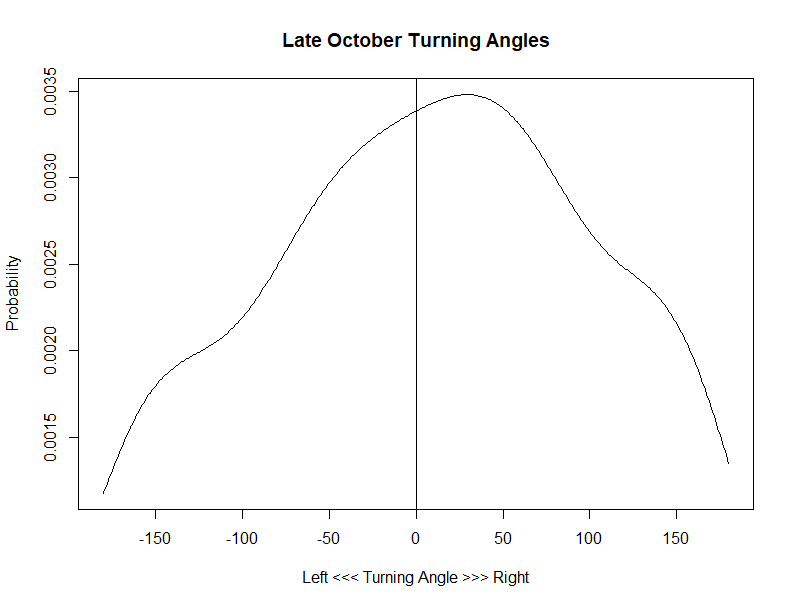
Fifty-four percent of the time he’s turning right. Is he circling his home range? Doubtful – it’s still almost a coin flip as to the direction he turns, and the angle of those turns are pretty evenly distributed.
As with everything deer related, the rut in November throws all the rules, patterns and logic out the window. He makes more small turning angles to the left – see the peak circled in red (52.1% of the time he’s turning to the left rather than the right).
But if he turns to the right, there’s a good chance he’s almost doing a 180 degree turn (circled in blue).
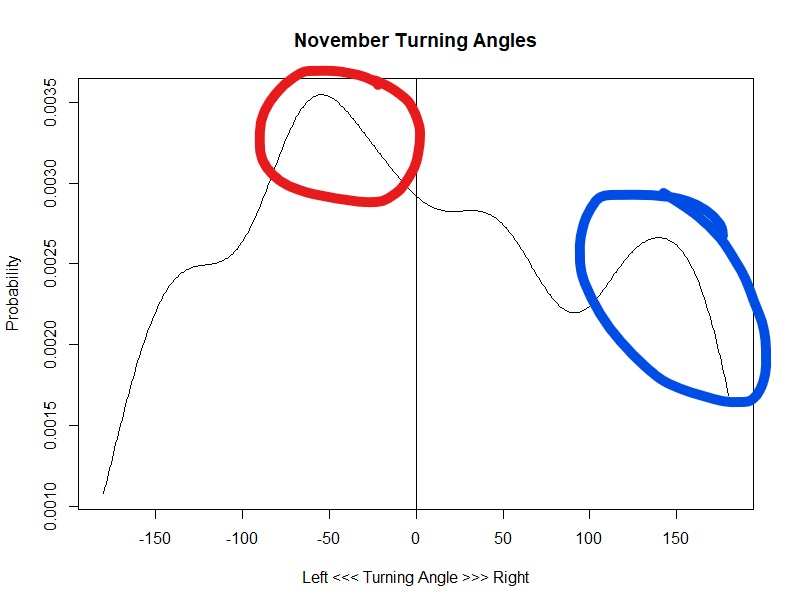
Hunters might love this stuff. But does this tell us anything about buck behavior or patterns of movement hunters yearn for? I’m not sure all the calculus, statistics, and graphs in the world could do that. But it’s still fun!
Our next case study will be Buck 28356 who was at least 3.5 years old in 2018. Below are graphs of his turning angles. Can you can predict if he’s running in circles?!
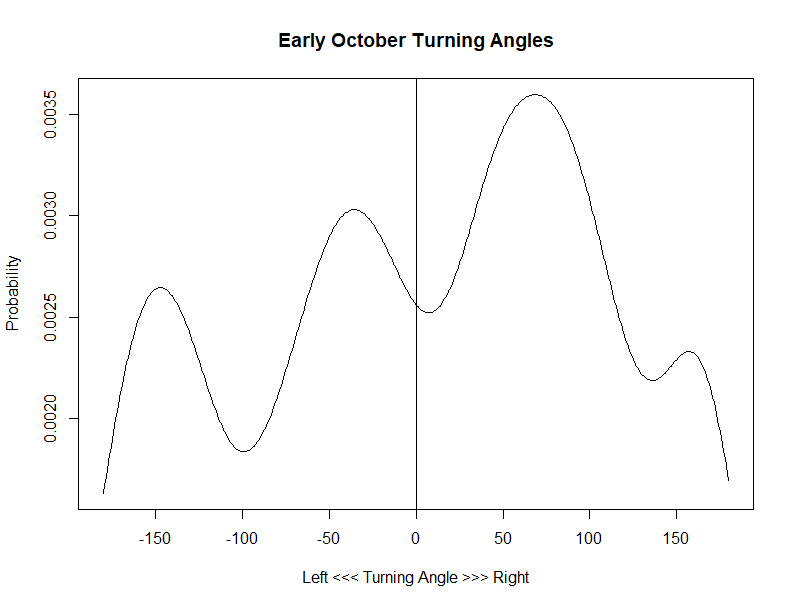
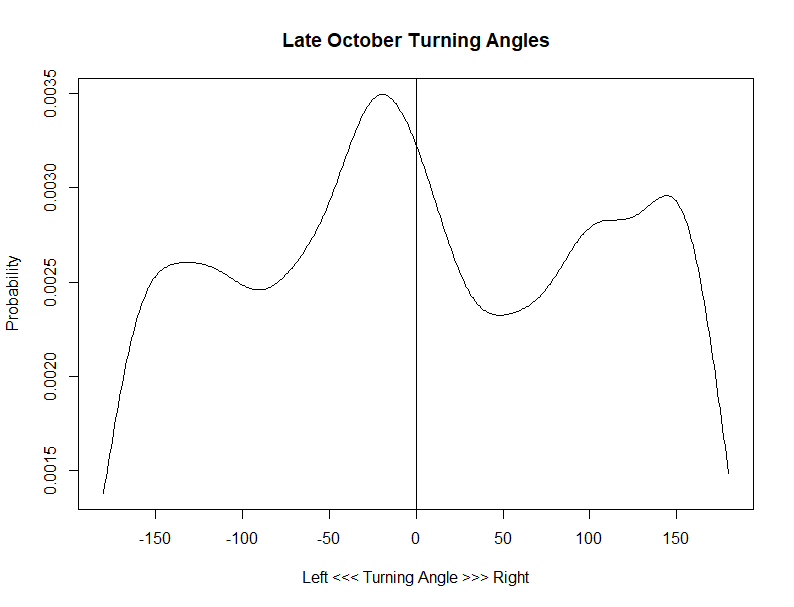
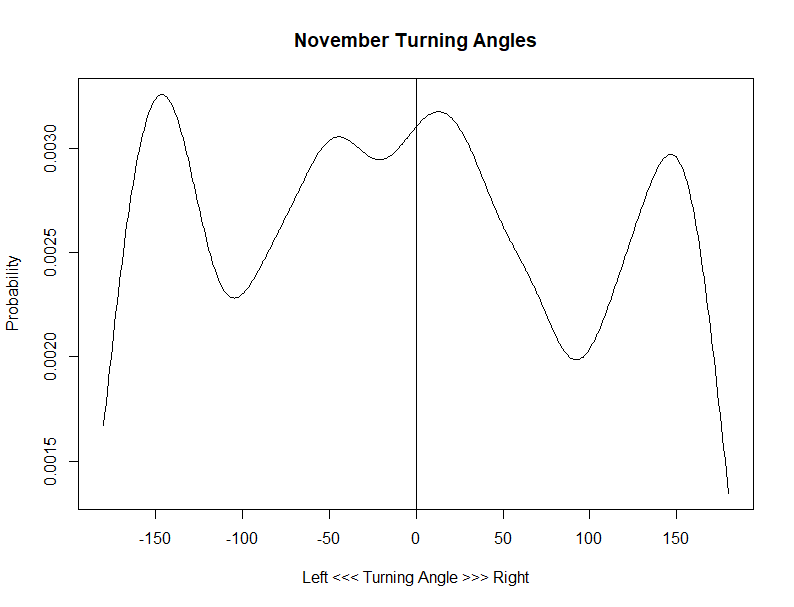
-Duane Diefenbach
If you would like to receive email alerts of new blog posts, subscribe here.
And Follow us on Twitter @WTDresearch
